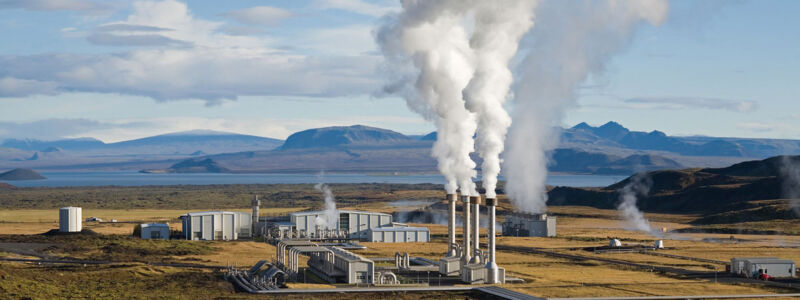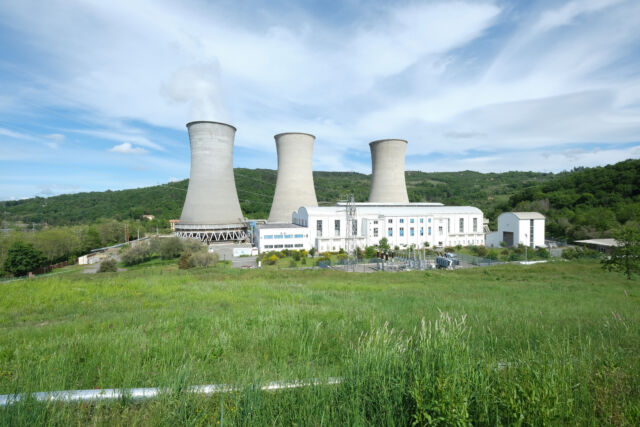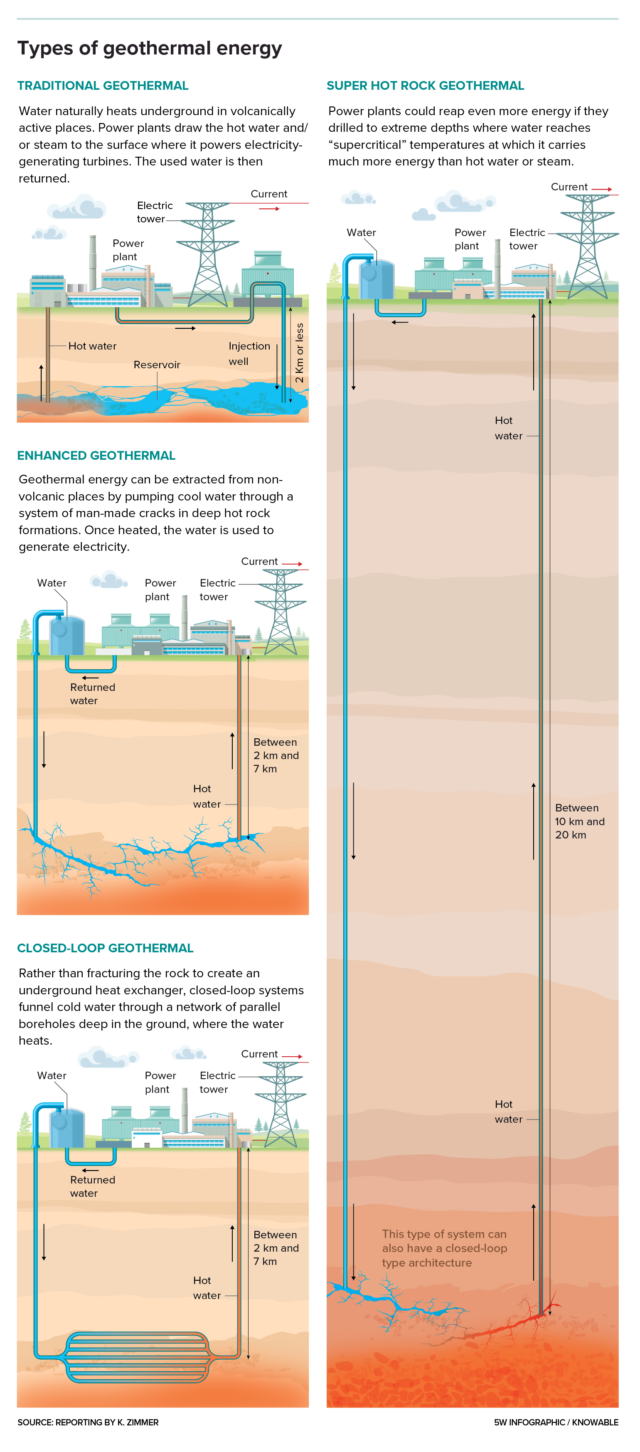
Gretar Ívarsson/Wikimedia Commons
Glistening within the dry expanses of the Nevada desert is an uncommon type of energy plant that harnesses power not from the solar or wind, however from the Earth itself.
Often called Undertaking Purple, it pumps water hundreds of toes into the bottom, down the place rocks are scorching sufficient to roast a turkey. Across the clock, the plant sucks the heated water again as much as energy mills. Since final November, this carbon-free, Earth-borne energy has been flowing onto an area grid in Nevada.
Geothermal power, although it’s repeatedly radiating from Earth’s super-hot core, has lengthy been a comparatively area of interest supply of electrical energy, largely restricted to volcanic areas like Iceland the place scorching springs bubble from the bottom. However geothermal fanatics have dreamed of sourcing Earth energy in locations with out such particular geological circumstances—like Undertaking Purple’s Nevada website, developed by power startup Fervo Vitality.
Such next-generation geothermal methods have been within the works for many years, however they’ve proved costly and technologically tough, and have typically even triggered earthquakes. Some consultants hope that newer efforts like Undertaking Purple could now, lastly, sign a turning level, by leveraging methods that had been honed in oil and gasoline extraction to enhance reliability and cost-efficiency.
The advances have garnered hopes that with sufficient money and time, geothermal energy—which at the moment generates lower than 1 p.c of the world’s electrical energy, and 0.4 p.c of electrical energy in the US—may change into a mainstream power supply. Some posit that geothermal may very well be a invaluable instrument in transitioning the power system off of fossil fuels, as a result of it may possibly present a steady backup to intermittent power sources like photo voltaic and wind. “It’s been, to me, essentially the most promising power supply for a very long time,” says power engineer Roland Horne of Stanford College. “However now that we’re transferring in direction of a carbon-free grid, geothermal is essential.”
A rocky begin
Geothermal power works greatest with two issues: warmth, plus rock that’s permeable sufficient to hold water. In locations the place molten rock sizzles near the floor, water will seep by porous volcanic rock, heat up and bubble upward as scorching water, steam, or each.
If the water or steam is scorching sufficient—ideally not less than round 300 levels Fahrenheit—it may be extracted from the bottom and used to energy mills for electrical energy. In Kenya, almost 50 p.c of electrical energy generated comes from geothermal. Iceland will get 25 p.c of its electrical energy from this supply, whereas New Zealand will get about 18 p.c and the state of California, 6 p.c.
Some pure geothermal sources are nonetheless untapped, corresponding to within the western United States, says geologist Ann Robertson-Tait, president of GeothermEx, a geothermal power consulting division on the oilfield companies firm SLB. However by and enormous, we’re working out of pure, high-quality geothermal sources, pushing consultants to think about methods of extracting geothermal power from areas the place the power is far more durable to entry. “There’s a lot warmth within the Earth,” Robertson-Tait says. However, she provides, “a lot of it’s locked inside rock that isn’t permeable.”

Tapping that warmth requires deep drilling and creating cracks in these non-volcanic, dense rocks to permit water to circulation by them. Since 1970, engineers have been growing “enhanced geothermal methods” (EGS) that do exactly that, making use of strategies just like the hydraulic fracturing—or fracking—used to suck oil and gasoline out of deep rocks. Water is pumped at excessive stress into wells, as much as a number of miles deep, to blast cracks into the rocks. The cracked rock and water create an underground radiator the place water heats earlier than rising to the floor by a second properly. Dozens of such EGS installations have been inbuilt the US, Europe, Australia, and Japan—most of them experimental and government-funded—with combined success.
Famously, one EGS plant in South Korea was abruptly shuttered in 2017 after having in all probability prompted a 5.5-magnitude earthquake; fracking of any type can add stress to close by tectonic faults. Different points had been technological—some vegetation didn’t create sufficient fractures for good warmth alternate, or fractures traveled within the improper course and failed to attach the 2 wells.
Some efforts, nonetheless, become viable energy vegetation, together with a number of German and French methods constructed between 1987 and 2012 within the Rhine Valley. There, engineers made use of current fractures within the rock.
However general, there simply hasn’t been sufficient curiosity to develop EGS right into a extra dependable and profitable know-how, says geophysicist Dimitra Teza of the power analysis institute Fraunhofer IEG in Karlsruhe, Germany, who helped develop among the Rhine Valley EGS methods. “It has been fairly powerful for the trade.”
